- 74 Mount Street, Heidelberg, VIC, 3084
- Monday to Friday: 9am to 5pm
FAQs
-
DWM Audiology > About > FAQs
Frequently Asked Questions
What is a hearing assessment?
There are a number of tests used by an audiologist to assess hearing. Pure tone audiometry measures the sensitivity of a person’s hearing across the range of sounds important for speech understanding. This should be carried out in a sound-proof booth.
What should a hearing assessment include?
A hearing screening test is a basic test of hearing levels using pure tone audiometry. If you are considering hearing aids, or have concerns about your hearing, a full diagnostic hearing assessment is needed. This will include:
- an evaluation of the health of your ears, indicating whether your ears/hearing require medical care
- pure tone audiometry
- a speech discrimination test to assess your ability to hear speech clearly
- an evaluation of your ability to tolerate loud and impact sounds
- an assessment of your communication needs and whether hearing aids will be of benefit to you
Hearing aids are programmed on the basis of your hearing assessment results. A full diagnostic assessment will enable your individual hearing and communication requirements to be assessed in depth, allowing accurate and personalised programming.
How do you prepare for a hearing test?
Avoid loud noise for 16 hours prior to a hearing test.
The hearing assessment requires concentration and time. If you’re distracted or not feeling well, you’re more likely to miss very faint test tones.
Does Medicare cover hearing tests and aids?
To obtain a Medicare rebate, you will need to be referred by your GP, Ear Nose and Throat Specialist or Neurologist. GPs may also refer as part of an EPC program, with a Medicare rebate claimable.
There is no Medicare rebate on hearing aids. Eligible patients may be covered under NDIS or under the Hearing Services Program. To obtain a Medicare rebate, you will need to be referred by your GP, Ear Nose and Throat Specialist or Neurologist. GPs may also refer as part of an EPC program, with a Medicare rebate claimable.
How often should I have my hearing tested?
Ideally, every 12 months – unless there is a need for more regular monitoring.
Do you need a referral to get a hearing test?
To obtain a Medicare rebate, you will need to be referred by your GP, Ear Nose and Throat Specialist or Neurologist. GPs may also refer as part of an EPC program, with a Medicare rebate claimable.
When should you use hearing protection?
Hearing protection should be considered for any noisy activities, for example when using power tools, for recreational shooting, motor sports, loud music – damage relates to ‘how loud, for how long, how often’.
At what decibel level is hearing protection required?
There is a legal requirement for venues to provide protection when volume levels reach a certain level. What are the noise dose limits?
If you have to shout to be understood when listening to music, the likelihood is that the volume level is potentially damaging. The risk of damage varies from person to person.
Do ear plugs protect hearing?
Yes! As long as the volume is brought down below to a safe listening level. This requires correct insertion of the ear plugs and a volume level that is able to be reduced to safe levels.
How do musicians protect their hearing?
There is a range of filtered ear plugs that have been designed for musicians. These are available in custom or non-custom forms. The filters have a flat attenuation (dampening) response across the frequency range, which significantly reduces the high frequency distortion found with solid plugs, and can provide varying levels of protection.
Learn more about hearing protection for musicians.
I have seen free hearing tests advertised. Why should I pay for a hearing test?
Most hearing tests offered free of charge are a basic screening test. If you are considering hearing aids, or have concerns about your hearing, a full diagnostic hearing assessment is needed.
Hearing aids are programmed on the basis of your hearing assessment results. An inadequate hearing assessment will restrict the accuracy of the hearing aid programming and the benefit obtained. A full diagnostic assessment will enable your individual hearing and communication requirements to be assessed in depth, allowing accurate and personalised programming.
All this takes time, and there are costs involved. We prefer to keep our charges transparent and do not absorb the assessment costs into our hearing aid prices.
A full diagnostic hearing assessment will include:
- an evaluation of the health of your ears, indicating whether your ears/hearing require medical care
- a detailed hearing test
- a speech discrimination test to assess your ability to hear speech clearly
- an evaluation of your ability to tolerate loud and impact sounds
- whether hearing aids will be of benefit to you
Hearing Aids
What is a hearing aid?
A hearing aid is a miniaturised amplifying device worn at the ear to assist people with a hearing loss. Hearing aids are part of a hearing rehabilitation program and require personalised fine tuning and ongoing maintenance support to achieve optimal results.
How do hearing aids work?
A hearing aid receives sound through a microphone, which converts the sound waves to electrical signals. These signals are analysed, adjusted and customised by the processing chip and amplified to your level of hearing loss. The amplifier then sends these signals to the ear through a speaker.
Which hearing aid is best for me?
The choice of hearing aid style will be determined by the technology required for your communication needs and level of hearing loss; by your preferences with regard to the appearance and visibility of the hearing aids; by your manual dexterity ability; and by the size and shape of your ears.
The level of technological sophistication should be matched to your communication needs and budget.
Learn more about choosing what hearing aid is right for you.
How much do hearing aids cost?
Hearing aid technology levels are set by the manufacturers to separate hearing aids into different performance and price categories. These differences are largely based on noise processing features – the ability to detect and highlight a dominant speech sound in a noisy environment.
People who rarely communicate in groups or significant levels of background noise may not need a sophisticated and expensive level of hearing aid technology.
There is no Medicare rebate on hearing aids. Eligible patients may be covered under NDIS or under the Hearing Services Program.
Does Medicare cover hearing aids in Australia?
There is no Medicare rebate on hearing aids. Eligible patients may be covered under NDIS or under the Hearing Services Program.
Are hearing aid batteries covered by Medicare?
There is no Medicare rebate on hearing aids or hearing aid maintenance, including batteries. Eligible patients may be covered for hearing aid provision and maintenance under NDIS or under the Hearing Services Program.
Why are hearing aids so expensive?
Hearing aids are highly sophisticated miniaturised devices that adapt to changing auditory environments and highlight a dominant speech sound in a noisy environment. The cost of hearing aids has been attributed to the amount of research and development required by the manufacturers to constantly improve their function and performance.
Hearing aid prices vary from clinic to clinic depending on the ongoing support and service included in the cost. We consider extensive follow-up Audiological support essential for a successful outcome. This allows us to support your adaptation to amplification and complete the fine-tuning of your hearing aids, so they are optimally matched to your individual communication and listening requirements.
Are cheap hearing aids worth buying?
We would not recommend purchasing hearing aids without follow up Audiological service being included in the cost. It can be difficult to know when or even if this is needed, if it is not being offered or made readily available.
Can a hearing aid stop tinnitus?
If you have a hearing loss, then hearing aids will be effective in both the management of your hearing loss and your tinnitus.
Hearing aids, by amplifying external sounds around you, will result in your internal noise, or tinnitus, becoming less noticeable.
How often do you have to replace a hearing aid?
The average life of a hearing aid across the industry is about 5 years. With careful at-home maintenance and the maintenance support provided by our clinic, many of our clients are able to get longer with a life of 7+ years quite common.
What happens if hearing aids get wet?
Hearing aids are vulnerable to damage from moisture and need to be removed before having a shower, a bath, a swim or at the hairdressers. If they get wet, dry them carefully.
Our vacuum suction cleaning device at the reception counter draws moisture from hearing aids and may be able to restore them. You will need to arrange a repair if they are not functioning.
How often should a hearing aid be cleaned?
Every time you remove your hearing aid/mould/dome from your ear, you will need to wipe off any wax/debris with a tissue.
For fully behind-the-ear hearing aids, you will need to clean the output hole in your ear mould/dome to keep it unblocked and clean the tubing as needed with your whisker. Remove wax or debris from the air vent (if present) in your ear mould using the tool provided.
Learn more about everyday hearing aid maintenance.
Can wearing a hearing aid make your hearing worse?
As you “normalise” to the amplification provided by your hearing aids, you will become more reliant on your hearing aids and find it more difficult to cope without them.
Don’t worry about this – it doesn’t mean that your hearing has got worse or “lazy” – it simply means that the bar has been raised with regards to improved hearing. You have got used to hearing better and have got out of the habit of concentrating hard to compensate for your hearing loss.
Your hearing aids are now doing all this work for you – the job they are designed to do!
Tinnitus
What is tinnitus?
Tinnitus is the term used to describe any sounds heard in the ears or the head which are not present externally.
There are two main types of tinnitus:
- Subjective tinnitus
- Objective tinnitus
Subjective tinnitus is most common and can only be heard by you. Objective tinnitus is rare and, although faint, can be heard by others.
What is the main cause of tinnitus?
A hearing loss or a change in hearing is the most common cause of subjective tinnitus. However, tinnitus can develop without a measurable hearing loss. Tinnitus can be caused or aggravated by head, neck and jaw movements – this is known as somatosensory tinnitus. Certain medications, neurological conditions and head injuries can also cause tinnitus.
Pulsatile tinnitus, where the heartbeat is heard, may indicate a vascular condition and needs to be medically evaluated. Objective tinnitus usually arises as a result of muscle contractions. TTS-associated clicking tinnitus is a form of objective tinnitus and can be heard by others.
What is the most effective treatment for tinnitus?
Neuroscience research has identified most cases of tinnitus as a neurological phenomenon, arising in the first step in the central auditory pathway – the series of locations in the brain where sounds are processed.
There is, as yet, no specific treatment to stop this process. Evaluating and treating any identifiable cause for the tinnitus can help. For persistent tinnitus, treating any associated anxiety and distress, and aiming for a satisfactory level of tinnitus habituation to be achieved are the most effective treatments.
Does tinnitus go away?
Tinnitus can be a temporary result of exposure to loud noise/music and fade away overnight or after a few days.
If there is a treatable cause for the hearing loss leading to tinnitus, then treating the cause can treat the tinnitus. If the tinnitus is associated with a persistent hearing loss or has been present for more than 6 months, it is likely to remain.
For most people, the tinnitus spontaneously moves into the background of their awareness over time.
What happens if tinnitus goes untreated?
If tinnitus persists, an audiological assessment to evaluate hearing levels, ear health, possible causes and to support tinnitus related anxiety and distress is a good first step.
Tinnitus therapy aims for tinnitus habituation to be achieved, where the tinnitus is in the background most of the time and causes little annoyance when noticed.
What does tinnitus sound like?
Tinnitus is most commonly heard as ringing, hissing, buzzing or clicking, and can be a single sound or a number of different sounds.
Tinnitus can be intermittent or persistent, and often fluctuates in volume.
Can ear wax cause tinnitus?
Wax blocking the ear canal or sitting against the ear drum can affect the hearing and cause tinnitus.
Can a hearing aid stop tinnitus?
Hearing aids, by amplifying external sounds around you, will result in your internal noise, or tinnitus, becoming less noticeable.
Hearing aids can be programmed to produce a sound in quiet environments so the tinnitus is less noticeable at those times. This may be in the form of white noise or streaming via an app.
The effort of straining to hear a conversation when a hearing loss is present and the resultant communication difficulties frequently lead to frustration, fatigue and stress. These are all major aggravating factors in tinnitus awareness and annoyance.
Can ear drops help tinnitus?
Ear drops do not directly treat tinnitus.
Ear drops might be used to treat an outer ear infection or to soften ear wax, both of which can be causes of tinnitus.
Why is my tinnitus louder at night?
Tinnitus is often more noticeable in a quiet environment, particularly if there also are no sources of distraction. For this reason, many people with tinnitus are likely to be more aware of their tinnitus in a quiet bedroom at night.
The tinnitus will not be as obvious when surrounded by a constant low level neutral sound, whether you are trying to fall asleep or if you wake during the night.
We carry stress in our jaw, which can manifest as jaw clenching or tooth grinding during sleep. This can be an aggravating factor for tinnitus.
Is it bad to sit in silence with tinnitus?
Research has shown that almost everyone develops temporary tinnitus when placed in an abnormally silent environment (such as a sound proof booth) and instructed to pay attention to any sound they may hear. So we all have a very low level internal hum.
According to the neurophysiological model of tinnitus, when people with tinnitus remain in a silent environment for some time, the gain (or volume) in the central auditory pathway increases, resulting in enhancement of the tinnitus sound.
You are therefore more likely to notice or listen to your tinnitus in a quiet room. This increased awareness may lead to an increase in active monitoring of the tinnitus. This, in turn, may lead to an escalating cycle of increased irritation and distress, which will, in turn, increase the awareness and the intrusiveness of your tinnitus.
Our senses react not to the absolute value of a stimulus, but to the difference between the stimulus (ie tinnitus) and the background. The tinnitus will not stand out as sharply and will be less obvious when surrounded by another sound.
Sound enrichment involves adding sound to your environment. The aim is to surround the tinnitus sound with a low volume, neutral sound which is easily ignored.
What is the best doctor to see for tinnitus?
Start with your GP, who will oversee your tinnitus care and can provide a Medicare-rebateable referral for a hearing assessment. Patients with significant tinnitus should be referred to an audiologist for a full diagnostic hearing assessment, which includes pure tone audiometry and Tympanometry testing to assess middle ear function.
In the majority of cases, tinnitus does not require further investigation.
Referral by your GP to an ENT specialist for investigation will be recommended if a person has unilateral tinnitus (heard in one ear only), particularly with an asymmetric hearing loss in that ear.
Other reasons for further investigation or onward referral include pulsatile tinnitus, tinnitus associated with significant vertigo, tinnitus in association with significant neurological symptoms and/or signs, or tinnitus causing significant psychological distress.
What does hyperacusis feel like?
When hyperacusis develops, loud/impact everyday sounds begin to appear unnaturally prominent and increasingly louder.
Following exposure to these sounds, a temporary increase in tinnitus (if present) and/or hyperacusis may be noticed, and escalating sensations in the ear may develop due to TTS, such as ear pain, a fluttering sensation or fullness/blockage in the ear.
Can hyperacusis be cured?
For many people, explanation and reassurance will allow them to desensitise their hyperacusis successfully.
The factors resulting in hyperacusis are complex and outside a patient’s conscious control, so it is impossible to predict how long hyperacusis will last and desensitisation may not always be achievable
Is hyperacusis a disability?
Significant hyperacusis can cause anxiety, distress, suffering from sound-induced pain and lifestyle constraints.
Hyperacusis can be considered a disability for people affected by their hyperacusis in this way.
How do you treat hyperacusis?
Desensitisation requires a personalised understanding of the mechanisms behind the development of hyperacusis and TTTS, such as:
- effective treatment of sound-induced pain
- belief in the prospect of change
- management of auditory hyper-vigilance
- the use of sound enrichment
- the judicious use of ear protection.
Our Services
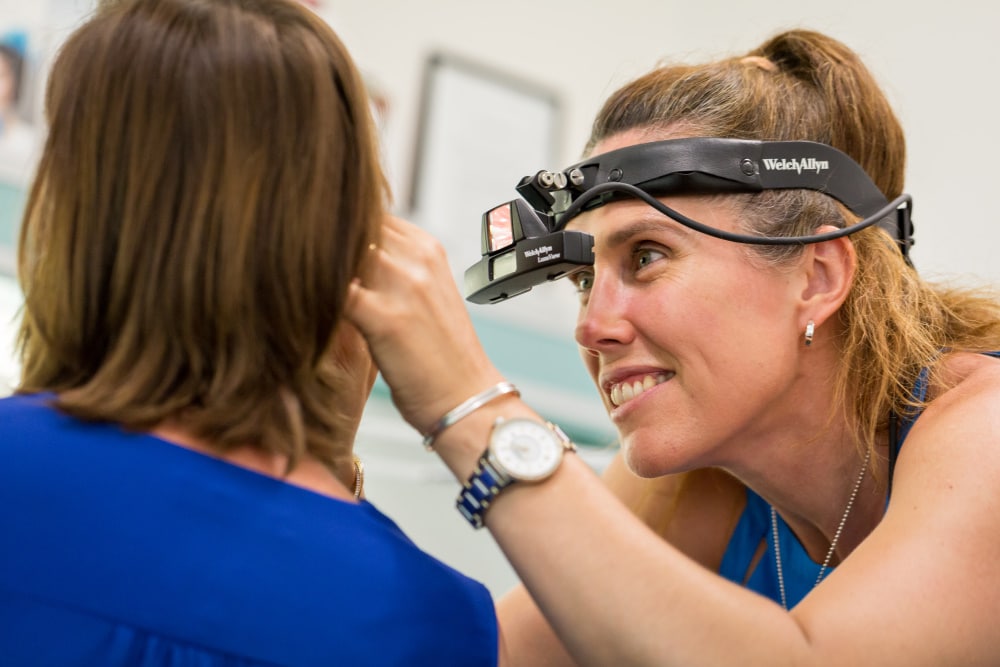
Hearing Services
Hearing loss is common, particularly as you become older. In Australia, research shows 1 in 5 people over 60 years old will have a hearing loss
Read More
Hearing Services
Hearing loss is common, particularly as you become older. In Australia, research shows 1 in 5 people over 60 years old will have a hearing loss
Read More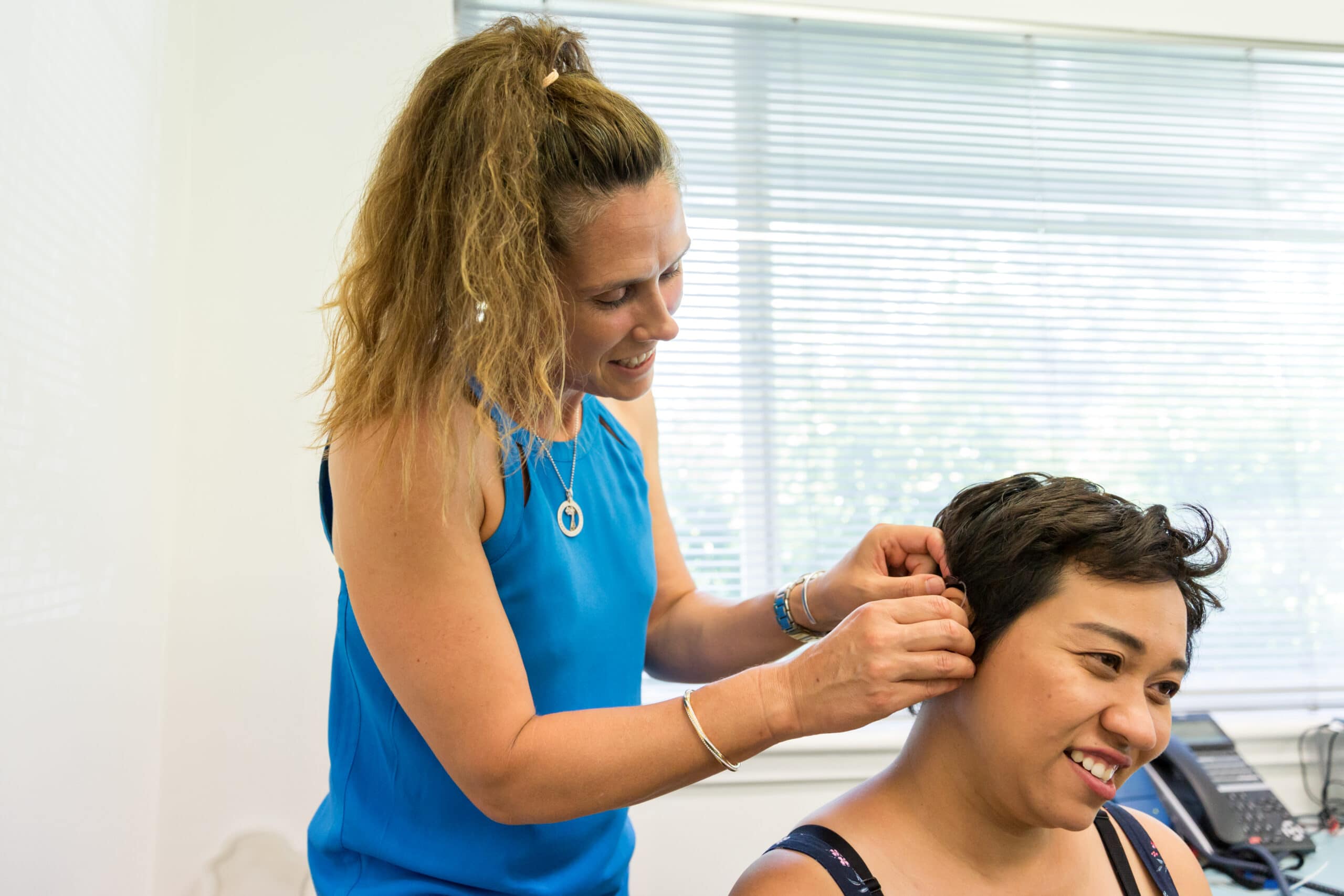
Hearing Aids
We believe that our patients should be given the necessary information and guidance to make their own hearing aid decisions.
Read More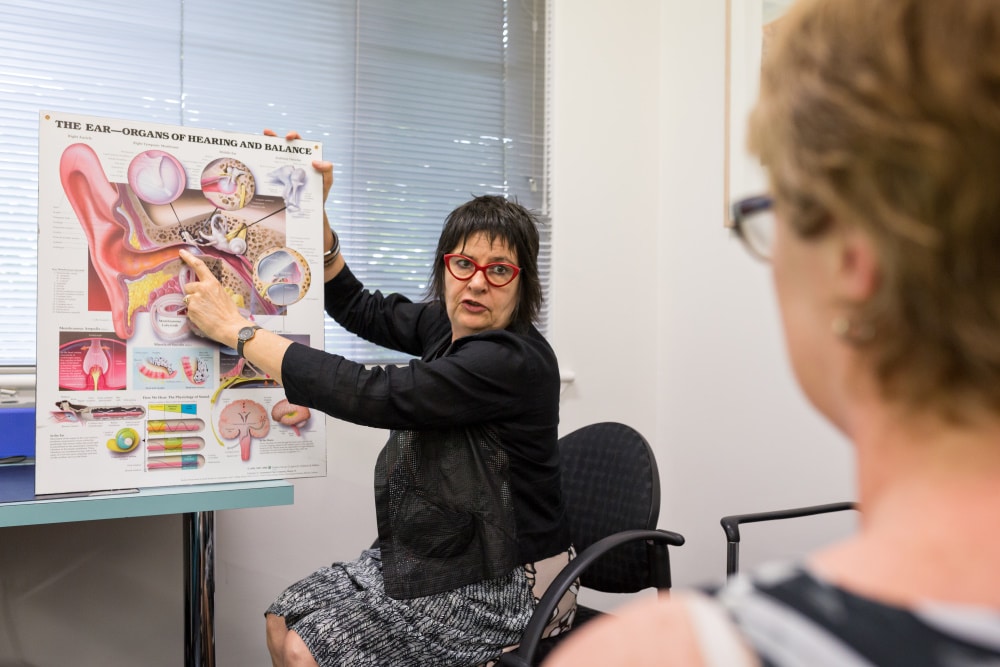
Tinnitus
DWM Audiology provides an individualised program to assist you in achieving tinnitus habituation and management.
Read More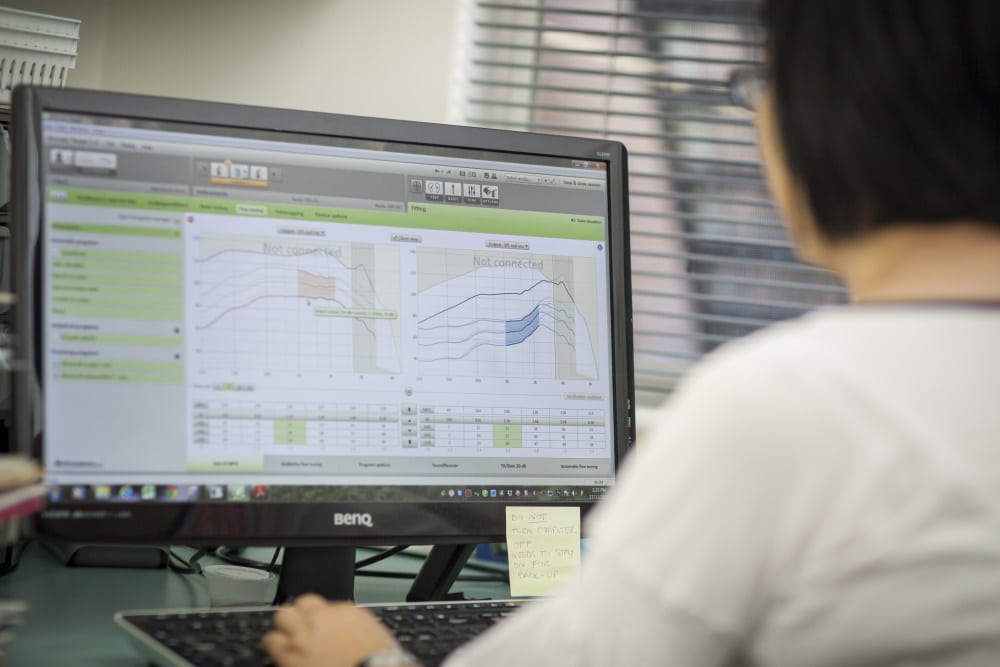
Hyperacusis & Misophonia
We provide a unique program to assist you in achieving increased tolerance to everyday sound.
Read More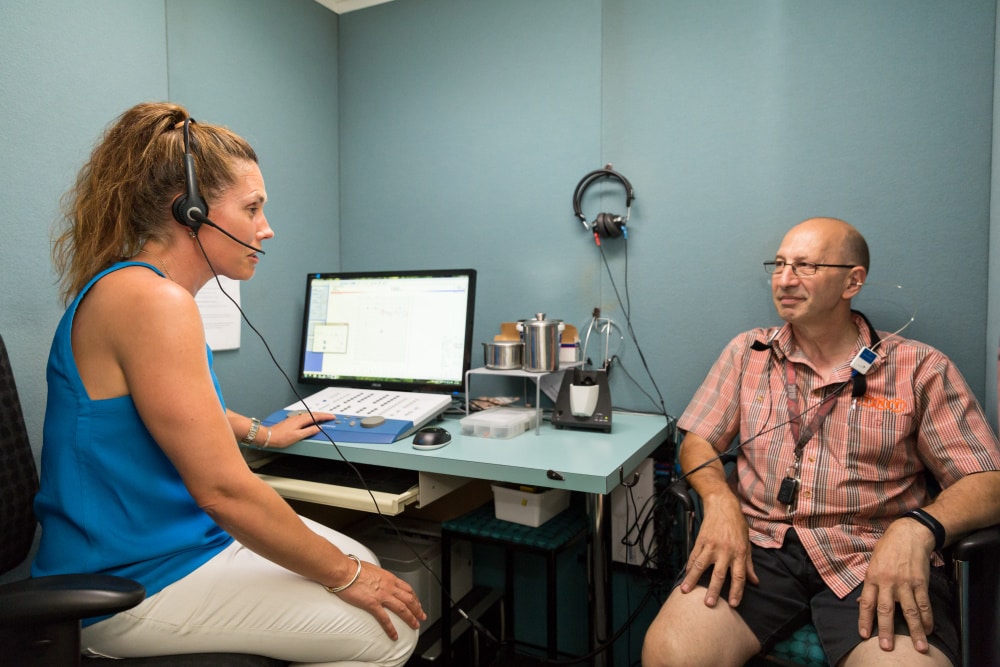
Acoustic Shock
Our Audiology practice provides unique expertise in the evaluation and management of patients and in workplace consultancy
Read More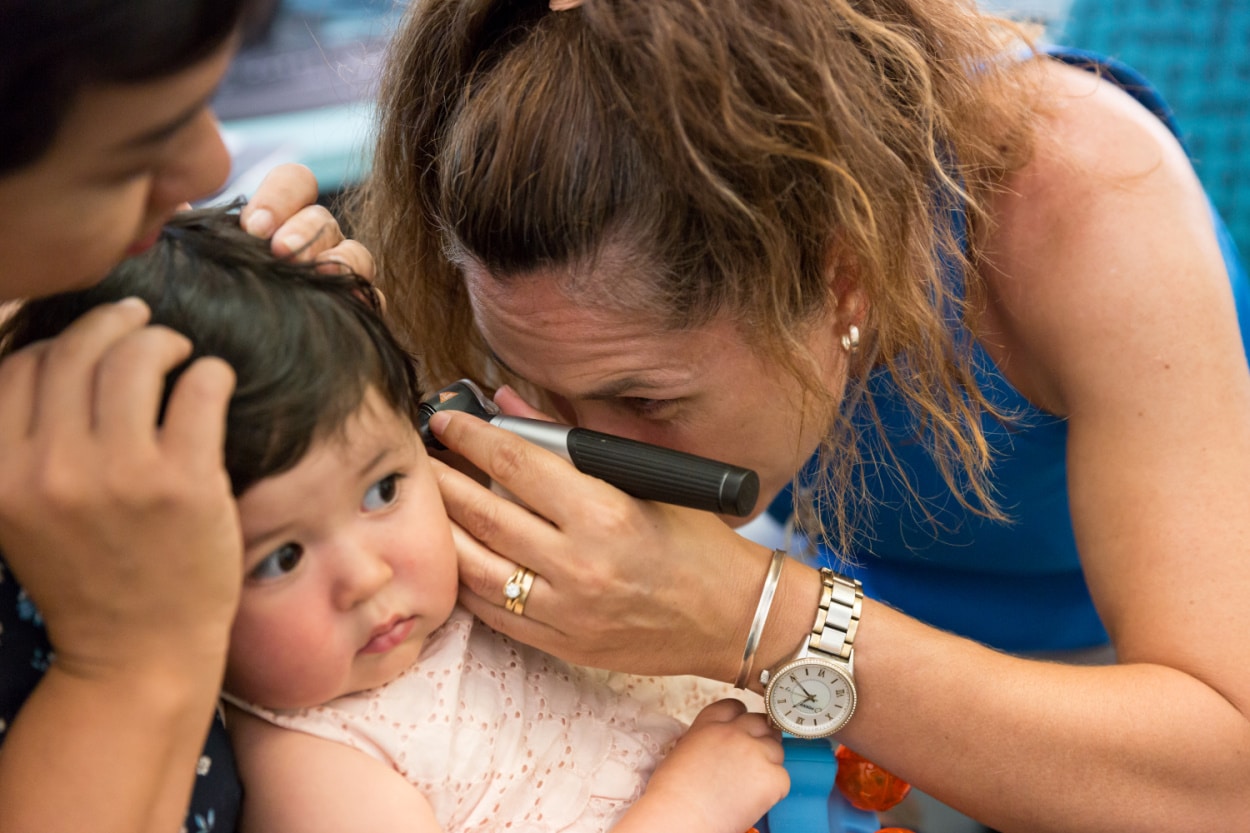
Hearing Tests for Kids
Hearing difficulties in school age children are known to have a significant impact on their social, behavioural and academic growth.
Read More
